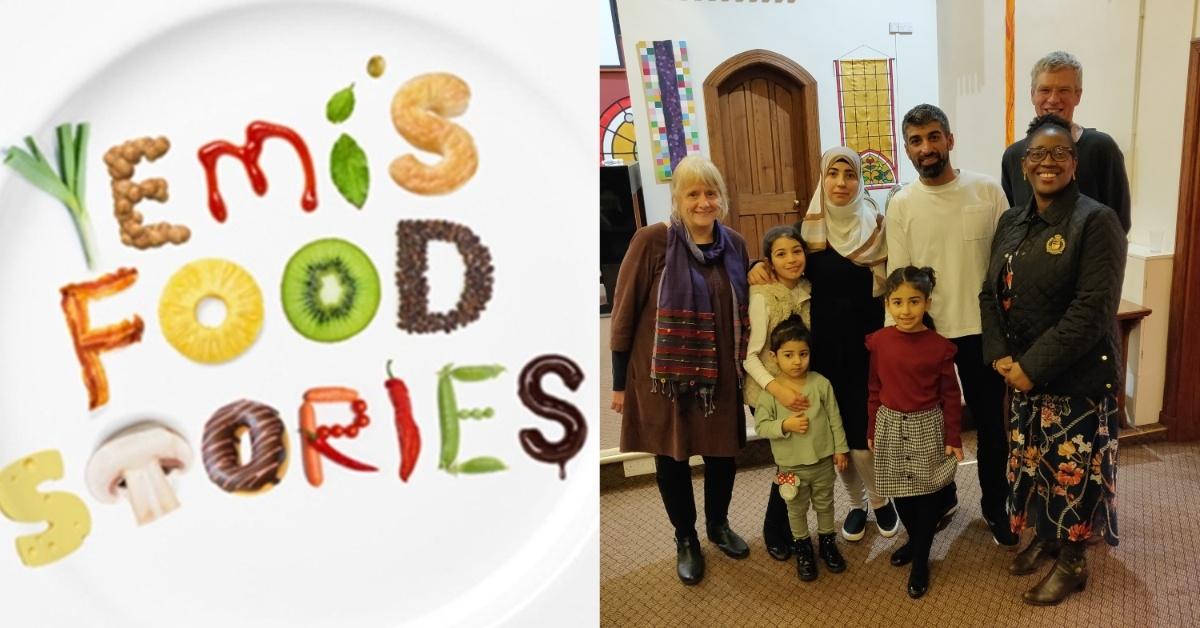Subscribe to trusted local news
In a time of both misinformation and too much information, quality journalism is more crucial than ever. By subscribing, you can help us get the story right.
- Subscription costs less than £1 a week with an annual plan.
Already a subscriber? Log in here.
18
Nov 2023
Yemi’s Food Stories: Bringing a taste of Syria to the Harrogate district

 Yemi Adelekan is a food writer and blogger who was a semi-finalist in last year’s BBC TV’s Masterchef competition. Every Saturday Yemi will be writing on the Stray Ferret about her love of the district’s food and sharing cooking tips – please get in touch with her if you want her to review a restaurant, visit your farm, taste the produce you sell or even share a recipe.
Yemi Adelekan is a food writer and blogger who was a semi-finalist in last year’s BBC TV’s Masterchef competition. Every Saturday Yemi will be writing on the Stray Ferret about her love of the district’s food and sharing cooking tips – please get in touch with her if you want her to review a restaurant, visit your farm, taste the produce you sell or even share a recipe.
I love Middle Eastern foods, so when I found out I was going to try authentic Syrian cuisine, I couldn’t have been more excited.
This week, I visited the Syrian Pop Up, which was held at Summerbridge Methodist Church, and hopes to become a regular event from next January.
The spread was the creation of Mohamad and Huda Al Habboul, who moved from Syria to Yorkshire in 2022.
It was a real family affair. The the food was laid out as a buffet – and there was lots of it! I could see the importance food plays in their culture just from first glance.

Mohamad and Huda Al Habboul.
The cold dishes included hummus, baba ghanoush, dolmas, Fattoush, and tabbouleh.
Tabbouleh
Tabbouleh is a healthy, Levantine salad which consists of finely chopped parsley, mint, onion, soaked bulgur wheat seasoned with olive oil, lemon juice, salt and sweet pepper.
Variations include adding tomatoes, cucumbers, and spring onions, or swapping bulgur wheat for couscous. The dish can be made gluten-free by substituting quinoa for bulgur wheat.
Fattoush salad
The Fattoush salad with crispy pastry was fresh, vibrant and flavourful.
The salad is made from toasted or fried pieces of khubz – an Arabic flat bread - combined with mixed greens, radish and tomatoes.
Kibbeh
Kibbeh is considered the national dish of Lebanon and Syria.
I expected to see it on the night and there was not one, but three versions of it: vegetarian, lamb and an un-fried one, which resembles a dense pate.
To make this croquette-like dish, you need bulgur wheat, your choice of ground meat, pine nuts, onion, garlic, and spices.
The wheat is softened and kneaded until pliable enough to hold the filling.
It is a labour of love but when fried to perfection, it will wow your guests!

Some of the flatbreads that were also served.
Rice dishes
The hot dishes included bulgur with lentils and caramelised onions, as well as several rice-based meals.
Dolmas is seasoned rice wrapped in vine leaves before being steam cooked in a rich stock.
Ouzi is rice cooked with ground lamb or beef, peas, carrots, cinnamon, coriander, 7 spice blend, Aleppo pepper, turmeric, and toasted nuts before being wrapped in filo pastry and baked.
The final rice dish reminded me of the Afghan pulao, but the Syrian version didn’t include raisins, so had a savoury rather than sweet note to it.
Hot dishes
There were also three casserole-like dishes amongst the spread.
One included peas, potatoes, carrots, courgette, aubergine, tomatoes and onions - it was a truly heart-warming and delicious creation.
The second, horaa osbao, included beans, lentils and Swiss chard dumplings seasoned with coriander. It was the perfect winter dish.
The final one was lamb mince cooked with tomatoes and onions and layered with aubergine. It reminded me of a Greek moussaka and, again, was absolutely delightful.

Baba ghanoush, salads and side dishes.
Baba ghanoush
If you love aubergine, you’ll love the Syrian baba ghanoush!
It is made from fire-roasted aubergine, Tahini, olive oil and lemon juice. Their version had a touch of sweetness, which I suspect came from adding pomegranate molasses.
Dessert
Finally, it was time for dessert.
We had baklava, which is layered filo pastry filled with chopped nuts and sweetened with syrup or honey – it’s the perfect after-dinner treat.
There was also mahalabia – a traditional Middle Eastern dessert – which consists of set milk topped with cashews and pistachio, topped off with glazed cherries.
I left with a huge appreciation for Syrian cuisine, which contains a balance of vegetables, meats and grains, topped off with indulgent sweets.
0